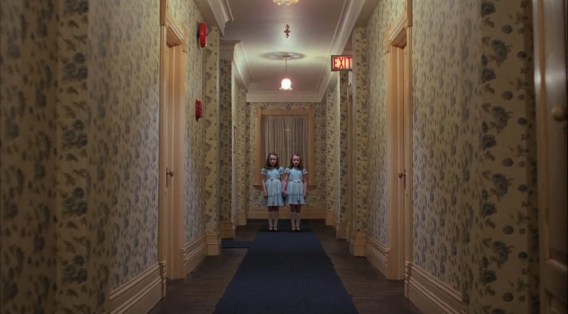As we wrote back in May, we’re big fans of video essayist kogonada, who shares our fondness for singling out a director’s stylistic tics and signatures. Kogonada does this in the form of supercuts, which have included his compilation of Wes Anderson overhead shots, his compilation of Quentin Tarantino’s shots from below, his compilation of point-of-view shots from Breaking Bad, and his compilation of the heightened “Sounds of Aronofsky.”
For his latest supercut, new this morning, kogonada highlights Kubrick’s use of “one-point perspective,” which refers to compositions in which spatial planes converge at one vanishing point in the distance—such as in a shot down a long hallway, or over train tracks headed into the horizon. As the video highlights, Kubrick also tended to place his subjects right over that vanishing point, dead-center in the frame, making any symmetry (especially in creepy twins) particularly striking.
That might all sound a bit wonkish, but combined with kinetic editing and the Requiem for a Dream soundtrack’s propulsive and ultra-dramatic “Lux Aeterna,” it’s thrilling.
Previously
Did You See This? The “Sounds of Aronofsky”
Every Wes Anderson Overhead Shot of Hands, Scored to Music
One Difference Between Wes Anderson and Quentin Tarantino
